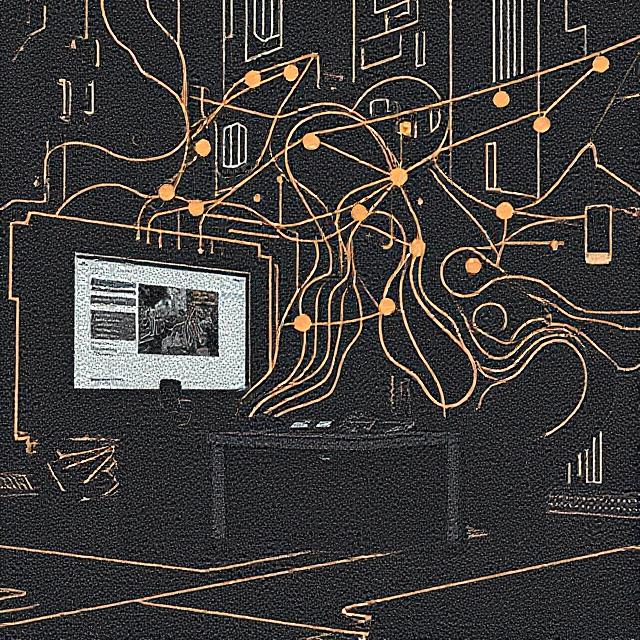Event-Driven Architecture: How It Works and When to Use It
 Sayan Mondal
Sayan MondalTable of contents

Event-Driven Architecture: How It Works and When to Use It
Modern software applications need to be scalable, responsive, and resilient. One architecture that helps achieve these goals is Event-Driven Architecture (EDA). It enables systems to react to changes in real time by decoupling components and allowing them to communicate asynchronously. In this blog, we will explore how event-driven architecture works, its core components, advantages, challenges, and when it is the right choice for your application.

What is Event-Driven Architecture?
Event-driven architecture is a design pattern where the system reacts to events rather than following a strict request-response model. An event is a significant state change within a system, such as a user clicking a button, a payment being processed, or a file being uploaded.
Instead of synchronous communication, where one service must wait for another to complete an operation, EDA enables asynchronous communication through events. This makes applications more scalable and efficient.
Core Components of Event-Driven Architecture
EDA consists of three main components:
Event Producers:
These sources generate events when something happens (e.g., a user submits an order).
Examples: Web applications, IoT devices, sensors, and databases.
Event Brokers (or Event Bus):
These act as intermediaries that capture, store, and route events to the appropriate consumers.
Examples: Apache Kafka, RabbitMQ, AWS SNS/SQS, Google Pub/Sub.
Event Consumers:
These services or components receive events and take necessary actions based on them.
Examples: A notification service sending an email after an order is placed.
How Event-Driven Architecture Works
An event producer detects a change (e.g., a new order is placed).
The producer sends the event to an event broker.
The event broker processes the event and forwards it to one or more event consumers.
Consumers react accordingly, such as updating inventory, sending a confirmation email, or triggering a workflow.
This decoupled nature allows each component to function independently, making the system more flexible and scalable.
Advantages of Event-Driven Architecture
Scalability:
- Since services communicate asynchronously, they can be scaled independently to handle high loads.
Resilience and Fault Tolerance:
- Failures in one service do not directly impact others, reducing system-wide failures.
Real-Time Processing:
- Enables real-time analytics, notifications, and monitoring.
Loose Coupling:
- Components are independent, making it easier to update, replace, or extend functionalities without breaking the system.
Flexibility in Technology Choices:
- Different services can be written in different programming languages, as long as they follow a common event format.
Challenges of Event-Driven Architecture
Increased Complexity:
- Managing multiple services, and event brokers, and ensuring reliable message delivery can be complex.
Eventual Consistency:
- Since events are processed asynchronously, there can be delays in achieving consistency across services.
Debugging and Monitoring:
- Troubleshooting failures in an event-driven system is more challenging than in a monolithic setup because events flow through multiple independent services.
Message Ordering and Duplication:
- Ensuring events are processed in the correct order and avoiding duplicate event processing requires careful handling.
Use Cases of Event-Driven Architecture
EDA is widely used in various domains where real-time data processing is critical:
Microservices Communication:
- Services interact through events instead of direct API calls, reducing interdependencies.
Real-Time Analytics and Monitoring:
- Stock trading platforms, network monitoring, and fraud detection systems leverage event-driven architectures to process massive amounts of real-time data.
IoT and Sensor-Based Systems:
- Smart home devices, industrial monitoring systems, and self-driving cars use EDA to process sensor data efficiently.
Social Media and Notifications:
- Platforms like Twitter and Facebook use EDA to trigger notifications, activity feeds, and recommendation systems.
E-Commerce and Order Processing:
- Online shopping platforms handle orders, payments, and inventory updates through event-driven workflows.
Comparison: Event-Driven vs. Request-Response Architecture
| Feature | Event-Driven Architecture | Request-Response Architecture |
| Communication Type | Asynchronous | Synchronous |
| Scalability | High | Limited |
| Latency | Low | Can be high due to waiting times |
| Flexibility | High (loosely coupled components) | Low (tightly coupled components) |
| Resilience | High (failures are contained) | Low (failures can affect the system) |
| Debugging Complexity | High | Low |
When to Choose Event-Driven Architecture
EDA is a great choice when:
Your application requires real-time event processing.
Scalability and fault tolerance are critical.
Components must remain loosely coupled to support independent deployments.
The system must handle unpredictable workloads, such as streaming data or high-volume transactions.
However, if your application requires strict data consistency, simple synchronous interactions, and minimal operational overhead, a traditional request-response model may be a better fit.
Conclusion
Event-driven architecture is a powerful approach that enhances system responsiveness, scalability, and flexibility. By decoupling services and enabling asynchronous communication, EDA supports modern software needs, from microservices and IoT applications to real-time data processing.
Understanding when and how to apply this architecture can help you design robust and efficient systems. If you're considering adopting EDA, carefully evaluate your use case, infrastructure, and operational requirements.
Would you like to implement an event-driven system in your project? Let’s discuss your thoughts in the comments below!
Subscribe to my newsletter
Read articles from Sayan Mondal directly inside your inbox. Subscribe to the newsletter, and don't miss out.
Written by